SmithGroup Celebrates Opening of Hip Hop Exhibition at Baltimore Museum of Art
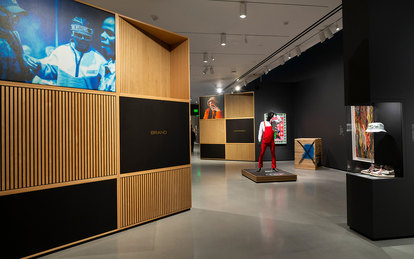
Today, the Baltimore Museum of Art opens The Culture: Hip Hop and Contemporary Art in the 21st Century, featuring exhibition design by SmithGroup, one of the nation’s leading integrated design firms. The Culture is a groundbreaking exhibition co-organized by the Baltimore Museum of Art and Saint Louis Art Museum that explores the conceptual, cultural and aesthetic attributes that have made hip hop a global phenomenon. It is on view in Baltimore until July 16, 2023, and will then travel to the Saint Louis Art Museum where it will be on view August 25, 2023, to January 1, 2024; Cincinnati Art Museum, June 28 to September 29, 2024; and Art Gallery of Ontario, November 23, 2024, to March 23, 2025.
"The 50-year anniversary of hip hop is a milestone moment for a cultural phenomenon born less than 10 years after the passage of the 1964 Civil Rights Act. Its growth and evolution are a direct reflection of the lived experiences and journey of the historically marginalized communities that formed and shaped it into the dominant global art form that we see today," said Dayton Schroeter, a design director at SmithGroup and lead designer for exhibit design. "The Culture goes beneath the formal aesthetics of hip hop to explore the social, political and cultural undercurrents that have shaped and influenced mainstream culture to the point of becoming ubiquitous as popular culture."
Hip hop first emerged as music from Black, Latinx and Afro-Latinx Americans living in the Bronx in the 1970s. It quickly proliferated through large-scale block parties to encompass an entire culture. From its inception, hip hop critiqued dominant structures and cultural narratives and offered new avenues for expressing diasporic experiences and creating alternate systems of power. Over the past two decades, in particular, technology, social media and capitalist interests have enabled hip hop to grow in complexity and reach, taking on new regional styles across the United States and around the world.
The Culture explores this pivotal and fertile era through more than 90 works of painting, drawing, photography, sculpture, video and installations by many acclaimed artists, including Derrick Adams, Mark Bradford, Lauren Halsey, Julie Mehretu, Adam Pendleton, Tschabalala Self, Hank Willis Thomas, Carrie Mae Weems, plus notable fashion designers and brands such as Virgil Abloh for Louis Vuitton, adidas Originals by Pharrell Williams and Daniel "Dapper Dan" Day for Gucci, among many others.
For more than half a century, SmithGroup’s Cultural practice has delivered award-winning projects for some of the world’s most iconic places and prestigious institutions and has continuously expanded the breadth of services it provides to cultural institutions. The firm's design for The Culture represents a deeper commitment to exhibition and interpretive design. "Museum visitors do not separate architecture and exhibits in their experience, rather they are inextricably linked creating an engaging experience," said Jamē Anderson, cultural practice director at SmithGroup. "As designers who already think holistically and act inclusively, offering our clients exhibit design and interpretive planning services is a natural extension of our integrated design approach."
The exhibition design of The Culture explores classic and contemporary elements of hip hop to create an aesthetic representation of the journey of hip hop as a growing and shifting cultural phenomenon. While not an Afrofuturism exhibition, the design team opted for the thematic mood and temperament of The Culture to be philosophically Afrofuturist. Dark walls featured throughout most of the exhibition simultaneously represent historical Black cultural memory loss and erasure, while also representing the unknown future possibility and potential of hip hop as a source of reconciliatory healing as well as cultural empowerment and enlightenment. The choice of dark walls also reinforces the idea that much of what is called hip hop occurs within the ephemeral atmosphere of nightlife culture.
The design for the exhibition borrows from a hip hop concept album as a metaphor for its spatial organization. Six themes—Language, Brand, Adornment, Tribute, Ascension and Pose—form the body of the exhibition and are meant to be experienced sequentially. Modular interpretive casework units function as transitional interludes in the way that skits have been used to transition between songs in many classic hip hop albums. Each interpretive moment is a new set point that reorients the visitor to new thematic content and a new spatial direction.
The flow of movement through the gallery is modulated by angular walls and a constellation of art moments that force the visitor to meander in a nonlinear, rhythmic sequence resembling the cadence of graffiti art or the structure of a lyrical verse. The architectural aesthetic of the space is inspired by contemporary high fashion retail design, emulating the look and feel of an opulent shopping experience. There is a careful balance of assertiveness and restraint in the exhibit design, ensuring the art still has the force of power within the dynamic and spatially complex architecture.
The design aesthetic and practicality of the interpretive modular casework is inspired by the dancehall speaker walls that provided soundscape for the early park jams and hip hop shows. The modularity of the units allows for a great deal of flexibility in housing ephemera, graphics, interpretive language, multimedia and art. It also allows the casework to be mobile and reconfigurable to adapt to future spaces as the exhibition travels, in much the same way that dancehall speakers were utilized as a traveling kit of parts. The vertical white oak slats of the casework are a static representation of the digitally rendered video signals seen in late 80s hip hop music videos. Some modules of the white oak casework angle inward at key moments, meant as an homage to the avant-garde, surreal or exaggerated visual language that defined the late 90s era of hip hop videos.
Fabric is used primarily on the interpretive casework as a conveyance medium of interpretive text, graphics and for material weight and is symbolically important. It represents the idea that hip hop evolved from a marginalized, fringe culture to becoming the preeminent, mainstream, dominant culture. The use of fabric is also a humble reminder that hip hop’s legacy is grounded in the experiences of Black Americans whose resilience and strength has carried them from enslaved cotton laborers to becoming some of the most influential fashion designers and cultural influencers on the planet. It is a symbolic nod to fashion design, the stage curtain and the red carpet being tangible markers of such progress and Black Americans’ journey forward.
The exhibition experience also includes a pulsing soundscape created by Baltimore-based musicians Abdu Ali and Wendel Patrick. Two black box spaces host video works by Kahlil Joseph and TNEG with Arthur Jafa, Elissa Blount Moorhead and Malik Hassan Sayeed in the special exhibition galleries, and a third video by Stan Douglas is presented in the museum’s contemporary wing. Multiple flat black platforms banded in white oak are placed throughout the exhibition to showcase fashion pieces draped upon genderless black fabric-covered mannequins.
The penultimate theme, Ascension, introduces a moment for contemplative reflection, featuring lightened fabric panels on the case work with white gallery walls. The final gallery of the exhibition, Pose, features an interactive installation that invites the public to share their hip hop experiences to create a living public archive that recognizes hip hop’s community-centered roots.
"Hip hop’s influence is so significant that it has become the new canon—an alternate set of ideals of artistic beauty and excellence centered around the Afro-Latinx identities and histories—and one that rivals the Western art historical canon around which many museums orient and develop exhibitions," said Asma Naeem, director of the Baltimore Museum of Art and co-curator of The Culture. "Whether through the poetics of the street, the blurring of high and low, the reclamation of the gaze, the homage to hip hop geniuses or the experimental collaborations across such vastly disparate fields as painting, performance, fashion, architecture and computer programming, the visual culture of hip hop along with its subversive tactics and its tackling of social justice surface everywhere in the art of today."
For more information about the exhibition and its works, visit the Baltimore Museum of Art website.
For more information about SmithGroup, please visit our Company Fact Sheet.
About the Baltimore Museum of Art
Founded in 1914, the Baltimore Museum of Art (BMA) inspires people of all ages and backgrounds through exhibitions, programs, and collections that tell an expansive story of art—challenging long-held narratives and embracing new voices. Our outstanding collection of more than 97,000 objects spans many eras and cultures and includes the world’s largest public holding of works by Henri Matisse; one of the nation’s finest collections of prints, drawings, and photographs; and a rapidly growing number of works by contemporary artists of diverse backgrounds. The museum is also distinguished by a neoclassical building designed by American architect John Russell Pope and two beautifully landscaped gardens featuring an array of modern and contemporary sculpture. The BMA is located three miles north of the Inner Harbor, adjacent to the main campus of Johns Hopkins University, and has a community branch at Lexington Market. General admission is free so that everyone can enjoy the power of art.
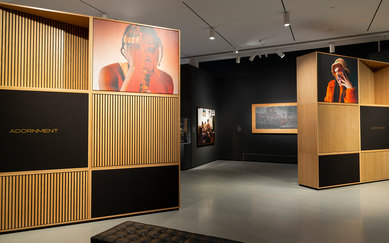
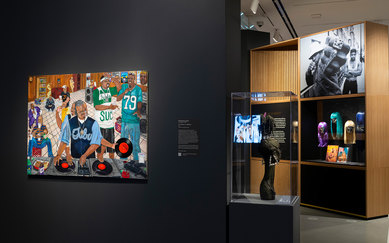
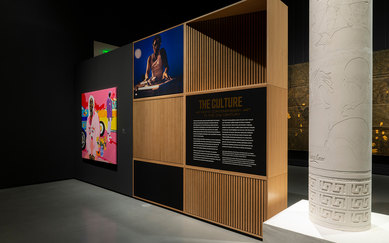
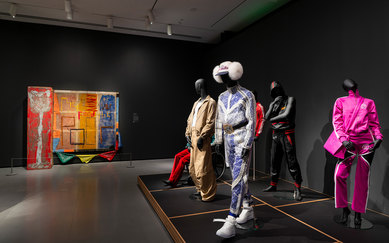
Photo Credit
Installation view of The Culture: Hip Hop and Contemporary Art in the 21st Century at the Baltimore Museum of Art, April 2023. Photo by Mitro Hood/BMA